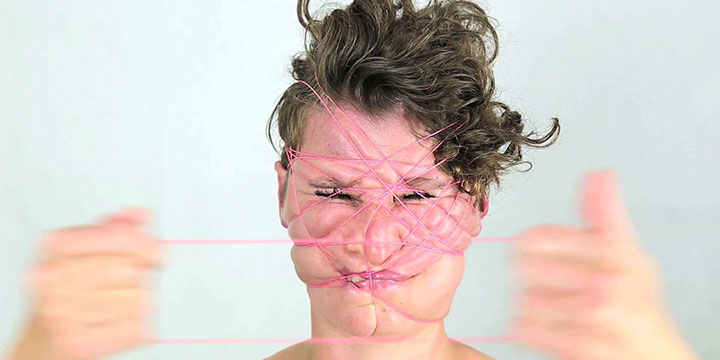Critics’ Pick: Nicole Büsing and Heiko Klaas compiled a set of videos for Blinkvideo which were on show at Art Cologne and Art Brussels earlier this year
Screening at Art fairs is as you know a challenge in itself. Captivating the visitor at a fair for longer periods of time by showing films has its limitations. Unless following a specific quest for video installation whilst at Art fairs, people are usually not necessarily inclined to enter a custom-made dark booth. At both spring fairs several stalls showed video art, most predominantly those galleries that have more than just one video artist on their books. Unlike Art Rotterdam with its newly introduced section “Projections” or, more recently, Art Basel and its vast selection of film at Art Unlimited, neither Art Cologne nor Art Brussels provide a separate area for video. And yet, if you looked closely, you would discover video gems at both fairs, in Cologne and Brussels.
At Art Cologne, Copenhagen’s Martin Asbæk Gallery featured Sofie Bird Møller’s video “Down the Line”. In her roughly one-minute short film the 39-year-old Danish artist uses found footage from old Hollywood movies and underpins it with music. The twist is that the protagonists change their outfits, strip off without the body becoming visible. Sofie Bird Møller uses image manipulation software so skillfully that both bodies and faces have been eliminated, thus creating a surreal impression. Shapeless beings shift around as if dancing amongst luxurious interiors. Showing selected scenes from well-known Hollywood movies this work may in particular appeal to film enthusiasts.
Gallery Figge von Rosen based in Cologne and Berlin presents the Russian artist Yelena Popova who trained at the Royal College in London. In her video essay “Unnamed” the 35-year-old deals with the recent history of her hometown situated in the Ural mountains at a site used for secret nuclear tests in the 1950s. The 14-minute video traces this invisible threat using slow tracking shots narrated with the artist’s comments.
“Rituals” (2012) is a 12-minute twin-channel video by Julika Rudelius examining the body language of young androgynous Chinese. During a stay in China Rudelius filmed young men who volunteered to pose for her amidst the rush of traffic, examining the differences in body language between Western and Chinese cultures against the backdrop of an increasingly globalised world. The 45-year-old artist originates from Cologne but now lives in Amsterdam and New York. Represented by Gallery Reinhard Hauff in Stuttgart Julika Rudelius has become an internationally acclaimed video artist.
Paris-based Gallery Jocelyn Wolff showed the four-minute video “Auslöschung” , ‘elimination’, by Ulrich Polster. The film and video artist who was born in 1963 and lives in Berlin and Leipzig uses poetic images accompanied by music to show how the eye of a donkey – moments before the animal is slaughtered – disappears into electronic nirvana. This is a tranquil, almost painterly piece of Art showing the limitations of life as well as the relationship of man and beast.
Finally Ming Wong’s 10-minute video loop presented by Gallery Carlier Gebauer from Berlin attracted considerable attention. The tongue-in-cheek work “Learn German with Petra von Kant” by the 42-year-old artist from Singapore dates from 2007. In it homosexual Ming Wong wears a blonde wig and the garish outfit Rainer Werner Fassbinder’s leading actress Margit Carstensen wore in “Die bitteren Tränen der Petra von Kant” (1972). Petra aka Margit aka Ming Wong appear drunk, dishevelled and bitter, making this video persiflage highly entertaining.
In Brussels the Dutch gallery owner Ron Mandos who has galleries in Amsterdam and Brussels showed new talent in the shape of the video “Origin of the Beginning” by 28-year-old Dutch artist Levi van Veluw. The barely four-minute-long film features the artist and members of his family as wooden aliens in a confined space. Initially this resembles a digital animation but is in fact a sculpture. Van Veluw covered all five actors’ bodies with more than 20,000 small pieces of wood thus creating the illusion of automated beings void of emotion.
To conclude, in Cologne and Brussels there is more than sufficient material for curators, critics and collectors of video art. And those who wish to purchase video art and don’t know how to display it in their own homes are welcome to copy the French video collectors Isabelle and Jean-Conrad Lemaître. All video cases of their collection are neatly stacked beside Monsieur Lemaître’s shirts in his wardrobe. However, the screening of their collection is exclusive and in close co-operation with high profile institutional exhibition venues.
































